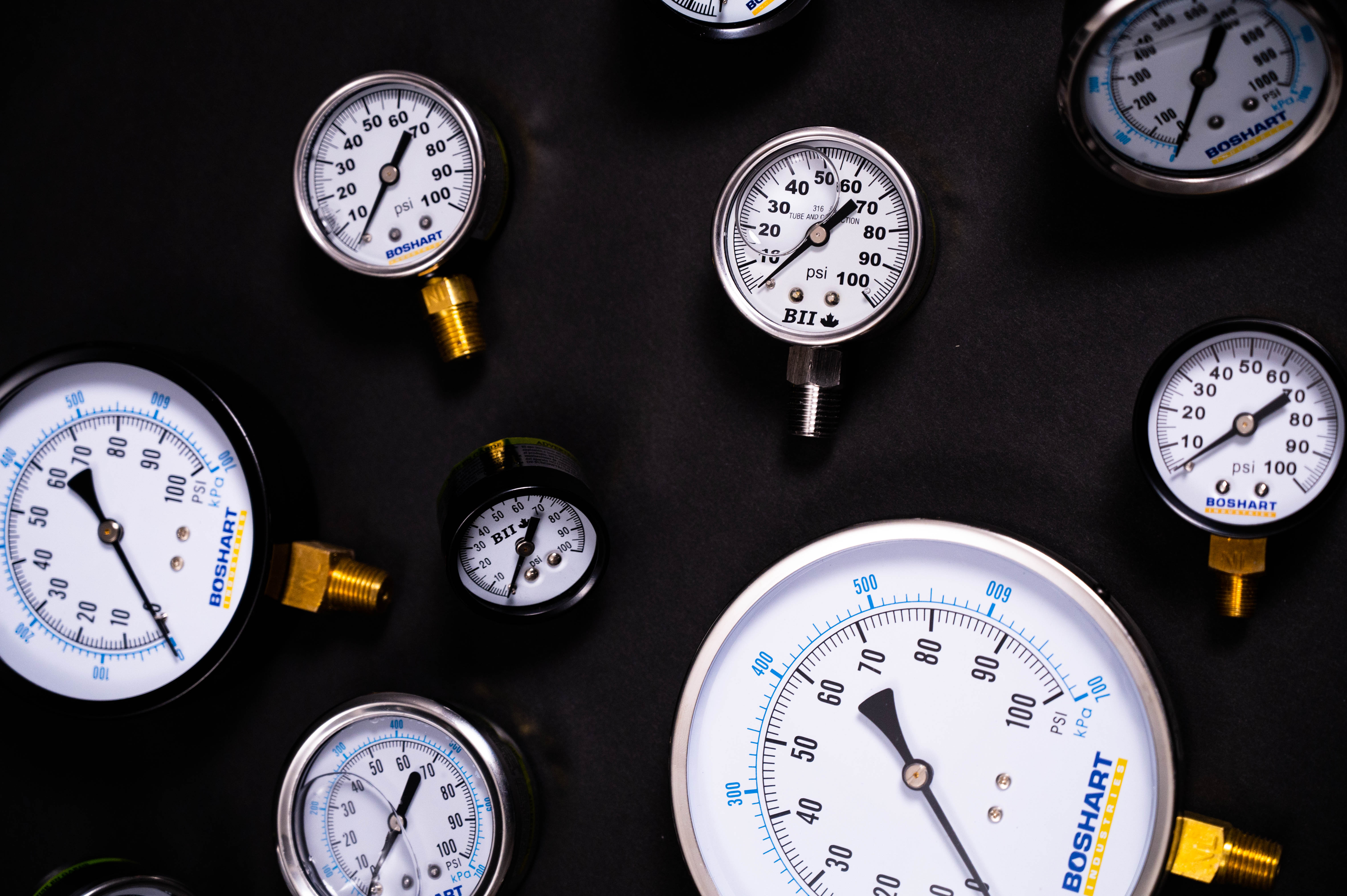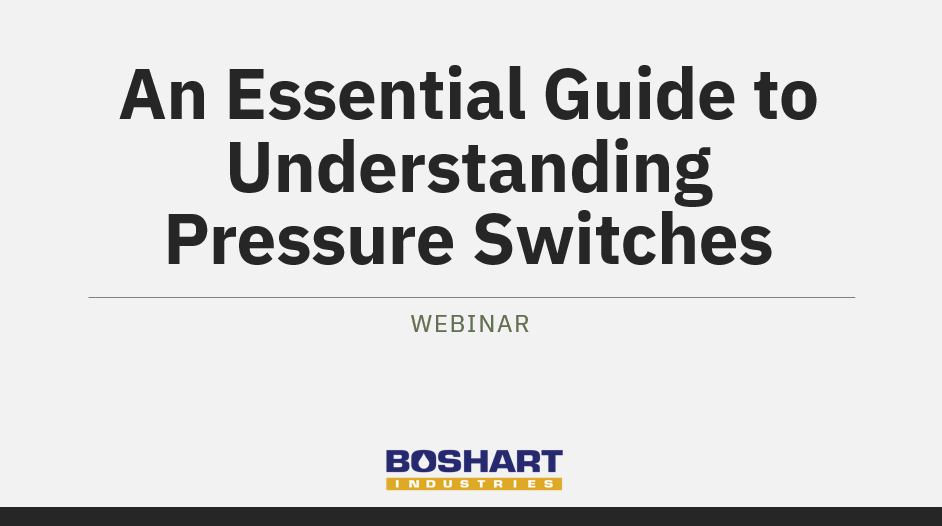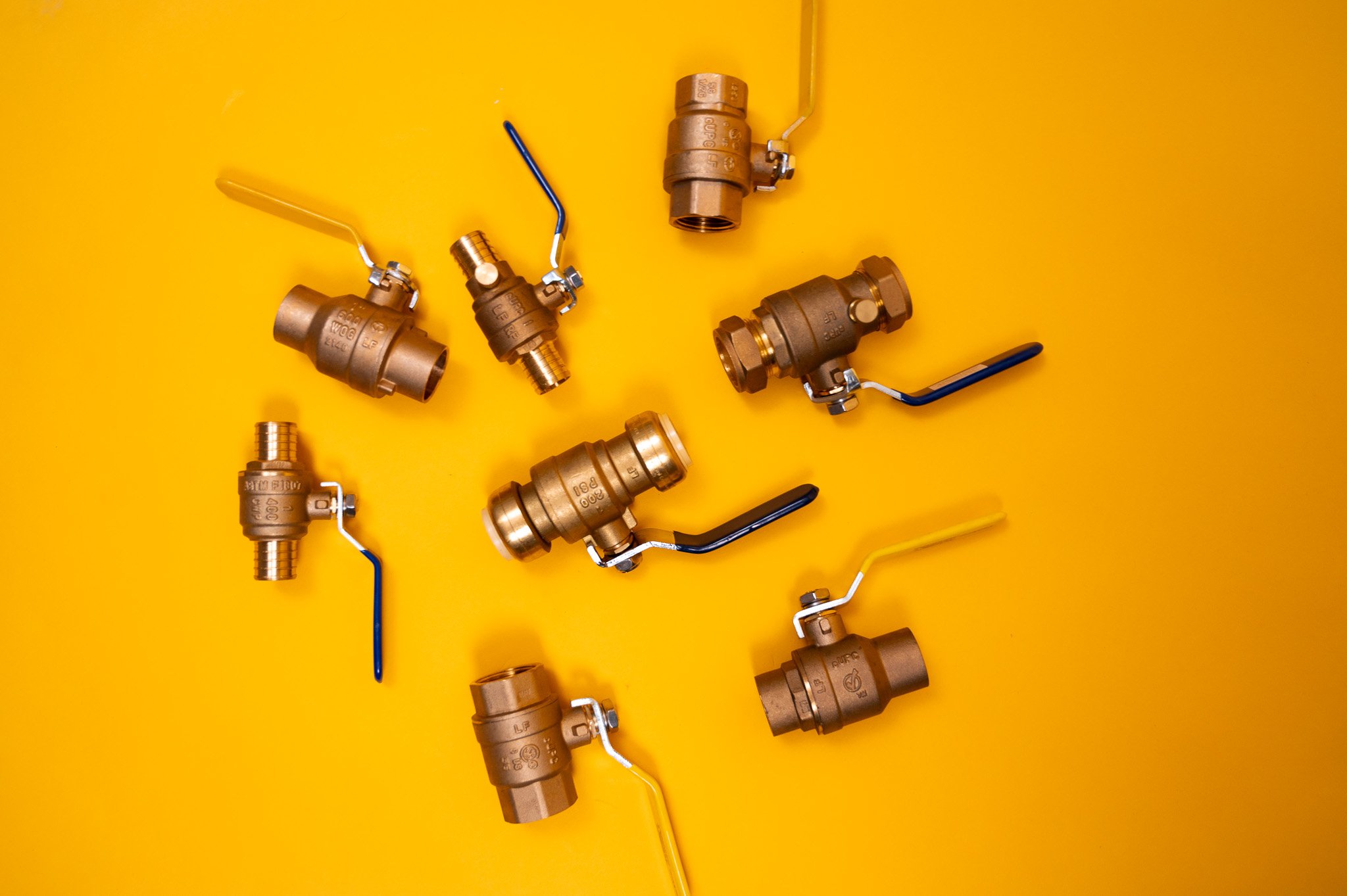We created a webinar to educate you and your team on Temperature and Pressure ratings and explain how it applies to malleable fittings and ball valves. Throughout the presentation, we take a look at charts and go through scenarios to help you better understand. Below, is a copy of the webinar.
We welcome any feedback about this webinar or suggestions for future webinars.
Transcript
Good morning everyone, welcome to our webinar on Temperature and Pressure Ratings. We have 90 people joining us today!
My name is Braedlyn McEwen and I am the Social Media and Content Coordinator here at Boshart Industries. Due to Covid-19, my team and I are all at home but Will Bender our Quality Assurance Analyst, Steve Hudson our Quality Assurance Manager and Paul Erb our Research and Development Manager will be available to help answer any questions at the end of the presentation. Any questions we cannot get to, we will reach out after the presentation.
Throughout the presentation you can type out any questions that you have.
You should see a side bar on the right hand side of your screen. If you click on the top button, which looks like an arrow in a box, it will open up a little menu with a question box which you can type your questions and we will be able to see them.
Please note the slide number if you’re referencing a specific slide. The numbers will be displayed on the bottom left of the slide.
Overview
To begin the presentation, we will go over exactly what temperature and pressure ratings are then go into how they apply to malleable fittings. We will then take a look at some different scenarios then move to ball valves where we will explore how temperature and pressure ratings work with ball valves followed by some more scenarios.
To finish the presentation off, we will have two quick scenario quizzes. You will be able to type out your answer to the question in the question bar and any correct answers will be put into a draw to win a prize! We will then finish with any questions regarding the presentation.
Let’s get started!
Temperature & Pressure Ratings
A good rule of thumb to always keep in mind is, when the pressure rating goes up, the temperature goes down and when the temperature goes up, the pressure rating goes down. This statement is true for all pressure vessels including valves, fittings and pipe. Temperature is the final factor in determining the pressure rating of valves and fittings. Because metals are weaker at higher temperatures, for any given material, pressure ratings decrease as temperature increases.
The malleable pressure rating is determined by the max pressure at the highest operating temperature. The ball valve pressure rating is determined by the max pressure at the lowest operating temperature. It may look like the ball valves are rated so much higher at 600 psi and the malleable is rated lower at 150 or 300psi. But in reality, they are much closer than you would think if you look at the standards to which they are rated.
To break it down and make it easier, we have created some scenarios to help you better understand.
Scenario 1: Temperature & Pressure Ratings for Malleable Fittings
The important thing to remember when working with malleable fittings is that the malleable fittings pressure is rated at the highest temperature.
For years, we referred to fittings as 150 or 300 lb. In 1973, the term pound was changed to class. Speaking in terms of pounds or PSI causes confusion and should be avoided, fittings should be strictly referred to by the class number. Here are some examples of stainless, bronze and black malleable fittings.
These two pictures show the difference between a class 150 fitting and a class 300 fitting. As you can see, the wall thickness is significantly thicker on the class 300 fitting.
The pressure rating solely depends on the temperature of the media. Class refers to the maximum pressure at the highest allowable temperature.
The allowable working pressures for pipe nipples are derived from ASME B31.3 Process Piping Code.
Considerations were taken into account for the wall thickness material removed by threading. Each component must be checked to verify its suitability for the system. The amount of wall thickness lost due to threading an NPT thread on schedule 40 pipe can be up to 50% .
As operating temperature increases, a heavier schedule pipe nipple may be needed to meet the systems design requirements. For this webinar we are going to focus on Malleable Fittings and Ball valves, however the same principles apply to pipe and pipe nipples.
Class 300 fittings pressure rating charts have reduced pressures for different nominal sizes, for example a 1" fitting is rated at 2000 PSI double the rating for a 3" fitting at the same temperature.
Pressure rating reductions for larger ball valves is also the normal. For example, our 0827 series ball valves are described as a 600 CWP rated valve, however you will see a notation indicating that the 2-1/2" and larger valves are rated at a lower 400 CWP rating.
This is an example from a chart that we will have available in a downloadable PDF after the presentation. These charts are to be used as a reference guide only. Specifying the correct pipe schedule and pressure class of a fitting depends on many different factors.
It is the ultimate responsibility of the end user's piping engineer to specify the correct pipe schedule and pressure class of fitting that will safely work in it’s intended application.
We will now move onto some malleable fitting scenarios.
Here is our first scenario for malleable fittings. This example is of a system with a maximum operating pressure of 200 PSI non-shock, with a maximum media temperature of 300°F,149°C.
What class fitting does the system require, Class 150 or Class 300? Let’s take a look at the pressure temperature chart to determine which class fitting is acceptable for this particular application.
This chart is designed to help determine which class fitting would work best based on the temperature and pressure of the system. The first column shows the temperatures, the second column shows the Class 150 fitting and the pressure ratings and the third column shows the Class 300 fitting and the pressure.
So now that we have all the information, we can figure out what class fitting the installer requires using the chart. First, we will look for the temperature which is 300°F, 149°C. Since, the Class 150 fitting is rated with a pressure of 150PSI, this particular system will require a Class 300 fitting.
Scenario 2: Temperature & Pressure Ratings for Malleable Fittings
For our second scenario for malleable fittings, we will take a look at an example of a system with a maximum operating pressure of 300 PSI non-shock, with a maximum media temperature of 100°F, 38°C.
Do you think a class 150 fitting is acceptable, or do you think the system designer will need to select a class 300 fittings?
Since the system has a maximum operating temperature of 100°F, 38°C, we first find the applicable temperature range in the first column, then follow across to the right to verify the pressure. Under the class 150 column you will find 300 PSI, confirming that the Class 150 fitting is suitable for this system. If the installer were to select a class 300 fitting, it would be overkill as the system does not require a fitting that can handle 1000, 1500 or 2000 PSI.
Now that we’ve taken a look at malleable fittings, let’s move on to ball valves.
Scenario 1: Temperature & Pressure Ratings for Ball Valves
Throughout the presentation we will only be talking about 0825 ball valves. Ball valve pressure ratings are rated at the lowest temperature industry wide, this applies to all the Boshart ball valves with the BII Identification Logo which stands for Boshart Industries Inc.
We will walk through a couple of ball valve scenarios looking at the Boshart 0825 series, it is important to note that there is not an industry temperature / pressure derating chart for valves. You must obtain the chart from the manufacturer.
Let’s move on to some ball valve scenarios.
As you can see in the picture, the system has a maximum operating pressure of 600 PSI Non-Shock and a maximum operating temperature of 100°F, 38°C. Let’s take a look at the chart to figure it out.
Do you think the 0825NL series ball valve be acceptable?
This chart shows the working pressure, PSI on the left and it shows the temperature in F at the bottom. The Gray shaded area represents the area on the chart that would be accepted.
Based on this chart, the 0825 series ball valve is rated at 600 PSI well beyond the 100°F temperature making it acceptable for this system, you will notice that the pressure rating does not drop until somewhere between the 212°F and 248°F at which the pressure rating drops at a significant rate as the temperature increases.
Scenario 2: Temperature & Pressure Ratings for Ball Valves
The last scenario we are going to look at is a system including both malleable fittings and ball valves. This system has a maximum operating pressure of 200 PSI Non-Shock, and a maximum operating temperature of 300°F, 149°C.
What class fitting is required for this system? Will the 0825NL series ball valve be suitable?
First let’s figure out what class fitting this system requires. Based on the 300°F operating temperature, you are required to use a class 300 fitting as the class 150 fitting, at 300°F is limited to 150 PSI where this system requires 200 PSI.
Based on the systems maximum operating pressure at 200 PSI Non-Shock and a maximum operating temperature of 300°F, 149°C, the 0825 series ball valve falls within the allowable range and is suitable for this specific system.
All together, The class 300 fitting will be needed for this system and the 0825 series ball valve will be a perfect fit.
If you have any questions based on any of the scenarios we have gone over, feel free to ask them now and we will try and get to as many as we can at the end of the presentation. If your question is for a specific scenario, please include the slide #.
The most important thing to remember is that when it comes to temperature and pressure ratings, malleable fittings and ball valves are opposite.
Malleable fittings pressure is rated at the highest temperature and ball valves pressure is rated at the lowest temperature.
As operating temperatures rise, the pressure rating may start to fall. As Nominal component size, diameter increases, the pressure rating will possibly start to fall.
Boshart does not specify what products are suitable for a given system, the selection of appropriate valves, fittings and nipples must be determined by a qualified system designer or engineer.
Quiz
We will now move onto the quiz section of the presentation.
You can type out your answer in the question bar and any correct answers will be entered into a draw to win some cool Boshart Swag! Please include the quiz # along with your answer when answering. If you have won, we will contact you following the presentation.
Here is the first quiz. If an installer is creating a system that will run at a non-shock pressure of 250 PSI and 250°F, 121°C, can they use a class 150 malleable fitting?
Let’s take a look at the chart to figure out the answer!
I will give you a minute to look at the chart and type out your answers!
The correct answer is no, at 250°F ,121°C, the max pressure rating for class 150 is 185 PSI.
For the final quiz, here is an example of an application that runs at 150 PSI Non-Shock and an operating temperature of 300°F, 149°C. Can a class 150 fitting and a Boshart series 0825 no lead ball valve be used?
Let’s take a look at both the malleable and ball valve chart to get the answer.
Here is the malleable fitting chart to help you determine if the class 150 fitting will work for this application. I will give you a minute to look then we will move onto the ball valve chart.
The answer is yes, the class 150 fitting will work for this particular system.
Now I will give you another minute to see if the 0825 no lead series ball valve will work with this particular application.
The answer is Yes, both the class 150 and 0825 series ball valve will work with this application.
Thank you to everyone who answered! Everyone who got the answers correct on both quizzes will be entered into a draw and we will contact the winners after the presentation.
We will now take the time to answer any of your questions that came up during the presentation. Any questions we cannot get to, we will address after the presentation.
Conclusion
That is the end of the presentation today. You can learn more about the features we offer at Boshart’s as well as other useful information on plumbing and water well products.
At BoshartU, our goal is to equip you and your team with the knowledge you need to be more successful.
We regularly publish new blogs and content that will help you become more comfortable and confident with our products.
Be sure to follow Boshart Industries on Instagram, LinkedIn and Facebook to stay connected with us.
Thank you again for joining us today.
Check out our website for more product specs, and subscribe to our blog to receive new content updates.
Enjoy the rest of your day and stay safe!
Have further questions about this subject?

Head over to Boshart's Knowledge Base: technical product information, guidelines, and more.







SHARE